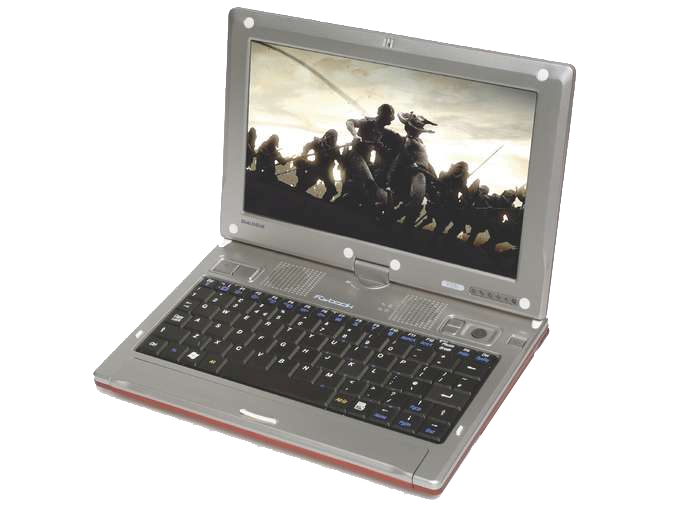TechRadar Verdict
The Flybook V33i imay be an improvement over the first release, but the form factor remains frustrating
Pros
- +
Strong chassis and good design
Cons
- -
Odd button placement
Poor battery life
Why you can trust TechRadar
The Tablet PC has thrown up a few novel designs in the last three years, but the Dialogue Flybook V33i 3g Lux Pro (£2145 inc. VAT) is one of the more innovative. It's an ultraportable weighing in at 1.3kg, and aimed more at the business user looking for something a little different. This is the second version of the device and it's a vast improvement over the original, as the chassis is stronger, the design refined and the general usability improved.
The 9-inch screen is small, but with a resolution of 1024 x 600 (XGA) pixels it's perfectly legible, and being widescreen you can view files comfortably when in landscape or portrait mode. Being a tablet, the screen can be folded around 180-degress to cover the keyboard and written on to directly with the supplied pen.
The keyboard is small and compact, which means you end up typing with the tips of your fingers. It's possible to type for long periods, but you wouldn't want this as your sole computer. However, for emails and short documents, it's usable.
Perhaps the oddest feature of the V33i is the placement of the mouse buttons above the keyboard, rather than below it. With the pointing device and two sets of mouse buttons located here - a pair on either side of the mainboard - it means you'll need to rethink the way you type and navigate the screen.
This feature has been done as the battery runs along the length of the front of the body. Anyone accustomed to typing on a laptop will be used to their fingers hovering over the touchpad, which simply isn't the case here. It's not as bad as it first seems, but it isn't the most comfortable way to work.
You won't find Intel's dual-core chips in this tablet. Instead, it uses the Intel 1.1GHz Pentium M 733 ULV, which is an older technology, but as it runs at a fraction of the voltage, is ideal for such form factors. The result is a casing that never gets hot, which is certainly an advantage in something light enough to carry in your hand for long periods.
Not that you'll really be allowed to, as with a battery life under test of a little over two hours, we found ourselves seeking out a mains socket more often than we'd like.
At over £2000, it's hard to see who the Flybook V33i is aimed at. It may be an improvement over the first release, but unless you feel like setting yourself a challenge, the form factor remains frustrating. The mouse buttons are in the wrong place, but this can be overcome. What can't be is the poor battery life, which limits the usability of the V33i considerably more so than the awkward mouse/pointing stick arrangement.
Tech.co.uk was the former name of TechRadar.com. Its staff were at the forefront of the digital publishing revolution, and spearheaded the move to bring consumer technology journalism to its natural home – online. Many of the current TechRadar staff started life a Tech.co.uk staff writer, covering everything from the emerging smartphone market to the evolving market of personal computers. Think of it as the building blocks of the TechRadar you love today.
